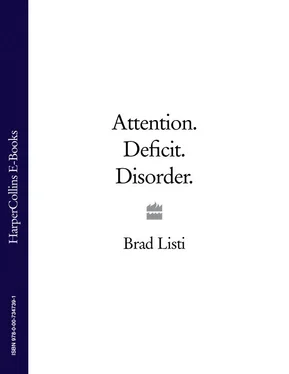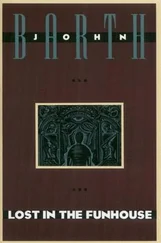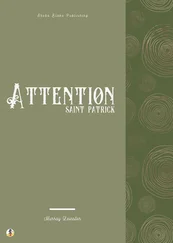The Parsis, a Zoroastrian religious community in India, place their dead atop twenty-foot-high stone structures called “towers of silence,” so the vultures can more easily devour them.
Australia’s Aborigines have been known to leave dead bodies in treetops.
In New Caledonia and among Borneo’s inland mountain people, dead bodies are placed erect inside the trunks of trees. The bark of the tree is then replaced over them.
The Jivaro peoples of South America inter their dead women and children under the floor. This practice dates back ten thousand years, to the rituals of urbanites in Mesopotamia.
Muslim people bathe their corpses carefully, with warm water and scented oils. Male corpses are bathed by men, and female corpses are bathed by women. Both men and women can bathe a dead child. The corpses are then wrapped in a plain cloth called a kafan, placed in a casket, and buried underground.
Jews wrap their dead in simple cloth and bury them underground too. Once the corpse is lowered underground, family members often toss a few handfuls of dirt into the hole. They might also tear a piece of their clothing, or a black ribbon, to signify their loss. This practice is called kriah, a tradition that many believe dates all the way back to Jacob’s reaction to the supposed death of Joseph.
In certain parts of Indonesia, it is customary for widows to smear themselves with fluids from the bodies of their dead husbands.
In central Asia, mourners often get masochistic, lacerating their arms and faces in honor of the deceased.
In Tanzania, young men and women of the Nyakyusa tribe customarily copulate at the site of a dead person’s grave, as a show of respect.
In some nomadic Arctic cultures, a doll of the deceased is carved from wood and treated as though it were alive. The doll is often kept for years. It is placed in positions of honor. It is taken on family outings. Food offerings are made to it. Widows have been known to sleep with the wooden doll in their beds, in remembrance of the deceased.
Earlier in the year, the filmmaker Stanley Kubrickand the baseball player Joe DiMaggio had died within a day of each other. Kubrick passed away on March 7, 1999. A heart attack did him in. DiMaggio died on March 8, of lung cancer and pneumonia. I learned about both deaths on the morning of March 9. My alarm clock went off, same as usual, and I heard Bob Edwards talking about their deaths on National Public Radio. I remember lying in bed, looking at the ceiling, hearing the news. I found myself feeling sad in a vague and peculiar kind of way.
Later that same day, I was driving around Boulder, running errands, headed north on Twenty-eighth Street, trying to make a left turn. Up ahead I saw two little girls standing on the side of the road, darling little Japanese girls, sisters holding hands. They darted out into the road, right in front of a guy in an Oldsmobile Cutlass. Traffic was thick, so the guy wasn’t going very fast—maybe twenty miles per hour. He slammed on his brakes, but by then, it was too late. The nose of the Olds struck the little girls, and they popped up in the air like rag dolls. One of them landed on the street. The other one landed on the hood. It was terribly surreal.
Everything started happening fast. Suddenly, I was out of my Jeep and running across the street. I arrived at the scene, and the little girls were lying there. The younger one was wailing. The older one was trembling, in shock. Both were conscious, and there wasn’t any blood. Onlookers were rushing in from every direction. Everyone was crowding in around the girls, trying to comfort them, asking them if they were all right. I felt nauseous. I looked to my left and saw a woman standing there. By the looks of her, she was a mother. She had her hands on her head, as though she were wearing a wig and the wind might blow it away. “Oh my God,” she kept saying. “Oh my God, oh my God…”
I took my jacket off and tried to drape it over one of the little girls, the older one. I’d read somewhere that people injured in accidents should be covered with blankets or coats, to keep them warm, to treat them for shock. The little girl wanted no part of my jacket. She threw it off her shoulders, looked at me, and started bawling. She said she wanted to go home. Having all of these strange adults around her was scaring her. I backed away, holding my jacket. I felt silly—dejected, almost.
Sirens rang in the distance.
The little girl sobbed.
“Don’t worry, sweetheart,” someone said to her. “Help is on the way.”
“I don’t want to go to jail,” she said.
Everyone assured her that she wouldn’t be going to jail.
The woman to my left crouched down and gave her a hug.
The driver of the Oldsmobile was short and middle-aged. He was wearing a Colorado Rockies cap, standing to my right with his hands in his pockets. He looked a little bit like Al Pacino, and he was oddly calm, talking to another onlooker.
“I didn’t see ’em,” he said. “I didn’t see ’em at all. They came out of nowhere. I had no way of seeing ’em. I didn’t see a thing until they were up on my hood. I didn’t see a thing. All of a sudden I looked up, and bam, there they were. There wasn’t even a crosswalk there. I couldn’t have seen ’em.”
An ambulance arrived, followed by two fire trucks and two cop cars. The circle of onlookers opened up, and the paramedics came through. The older girl kept saying that she wanted to go home and see her mommy. The little one just sat there crying. After a while, people started to disperse. I walked back over to my truck, climbed inside, and drove away. My hands were shaking, and I drove very slowly. It was a cold wintry day, and there were giant towering clouds rolling in over the mountains. It was a very strange afternoon.
I dated Amanda during my sophomore year of college.She was a freshman. We started seeing each other in September of that year and kept it going all the way through the following May, at which point we parted ways for the summer. Amanda had an internship lined up back at home in the Bay Area. I was staying in Boulder to work a construction job and take summer classes.
At the moment of our parting, everything was fine. Saying goodbye seemed to bring out the best in us. We said we’d call, we said we’d write. We told each other we loved each other—the first and only time we’d ever done so. We said that we’d keep it going, but it didn’t wind up working out that way, which was my fault entirely. I didn’t hold up my end of the bargain. Somewhere along the line, I experienced a change of heart. The summer apart was no good for me. My imagination took over. I had too much time to think. I convinced myself that I wasn’t ready for anything long-term, told myself that things were getting too serious, that I was too young to be this involved. I needed time, I needed space. Felt trapped. Got nervous. Didn’t want to be tied down. At that point, Amanda was a thousand miles away. I was nineteen. I figured I’d deal with it later.
I went to visit her once that summer, on Independence Day. Amanda showed me all around the city—her favorite museums, her favorite parks, her favorite neighborhoods. She took me to her favorite café in Hayes Valley. On the night of the Fourth, we watched the fireworks from a hillside in Marin. I was feeling awful, completely phony. I wanted to tell her that I was having my doubts about continuing the relationship that night, but I didn’t go through with it. I told myself the timing wasn’t right.
When she got back to Boulder that August, I broke up with her poorly. First, I dodged her for a week. Then I returned her phone calls slowly, much more slowly than normal. It went on like this into September. We’d see each other, here and there. I slept with her a couple of times, knowing that I was going to break up with her. I pretended.
Читать дальше












